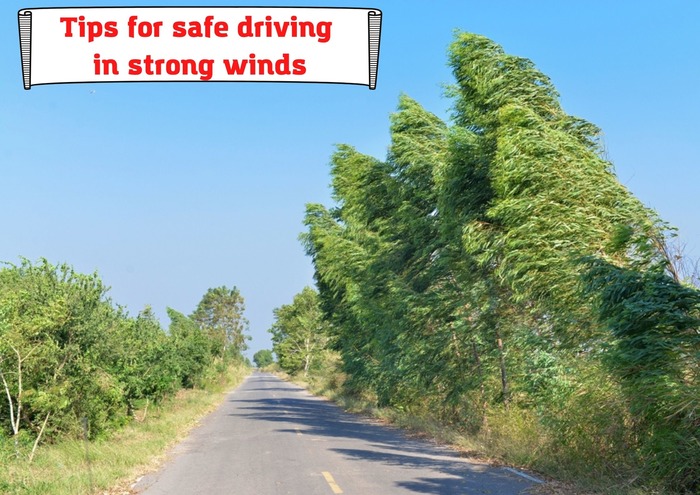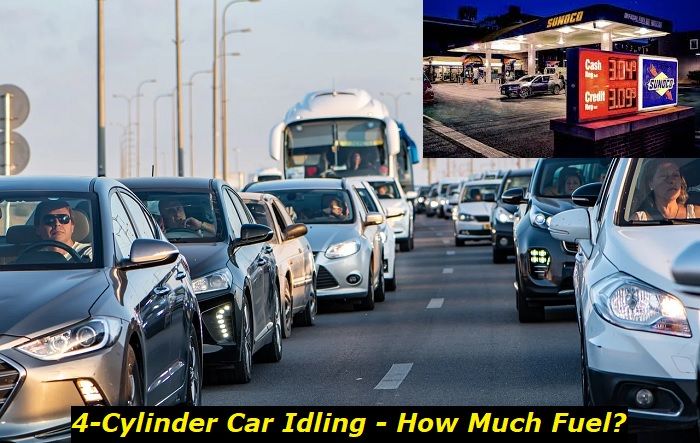.jpg)
Driving in strong winds can present several problems, particularly for lightweight vehicles, large trucks, and camper vans with large surfaces. Having a huge surface in contact with wind currents or being too light can cause such vehicles to be moved around during stormy or windy conditions. Discover why you feel like your car is being blown by wind here below and tips on fixing that issue.
Reasons your car feels like the wind is blowing it
The flow of wind or air around your car significantly affects its top speed, acceleration, handling, and fuel efficiency. Hence, it is critical to optimize that air movement to get the most pleasurable and efficient driving experience. All these issues can be characterized as aerodynamics or fluid dynamics. Car manufacturers often invest plenty of money and research into ensuring they produce the most aerodynamic friendly vehicles possible.
Key concepts about aerodynamics and how wind affects your car
Drag
Drag refers to the resistance or forces a car must overcome to drive through the atmosphere or air. The intensity of drag is always present in every interaction between a vehicle moving forward and the wind or air flowing around it.
In automotive aerodynamics, drag comprises of three primary forces:
- Frontal pressure: The impact produced by a car's body pushing wind to move forward
- Rear vacuum: The effect produced when air cannot fill in the void left after the car moves forward
- Boundary layer: The friction effect produced by the slowing moving wind on the car's body surface
These three forces affect the airflow across a car's body, and they must be well addressed with the appropriate aerodynamic devices and solutions.
Frontal area
A vehicle's frontal area also plays a crucial part in its aerodynamic design. This area refers to the hole size a car makes in the air while driving. Hence, smaller sedans make smaller air holes than a semi-trailer truck while pushing through the air.
Downforce or lift
Every object that travels through air or wind creates a downforce or lifting situation. Many road cars and race vehicles use various aerodynamic devices like inverted wings that improve downforce and increase traction. However, the average vehicle often creates a lift, which is why you may experience swaying when driving in windy conditions.
How to fix it if your car feels like it’s being blown by the wind
The following tips seek to improve the effectiveness and movement of airflows around your vehicle to improve handling and traction.
Remove any unnecessary attachments and accessories
First, you must check whether you have anything on your car that adds unnecessary or excessive drag. Installing protruding car accessories like big roof racks and LED light fixtures can increase the drag force and add more wind resistance. Thus, you can begin with removing any accessories that affect adequate airflow around the vehicle.
Roll up windows at high speed
The most apparent and uncomplicated car aerodynamic improvement tip is rolling up all the windows while driving at fast speeds. Driving with open windows allows large amounts of air to enter the car, increasing drag and slowing it down. That means your engine must work harder to move the vehicle forward.
Retain the tailgate
One of the common myths about pickup trucks is removing the tailgate improves aerodynamics. However, that statement is utterly false as numerous studies show that pickup trucks have the best fuel-efficiency results when the tailgate is up in its traditional position.
Use narrow tires
Another popular and practical tip is to use narrow tires to reduce the overall wind resistance to your vehicle. Besides improving the aerodynamics, switching to narrow tires is also beneficial when driving on snowy roads.
Install a splitter
A splitter installed at the front of your vehicle offers a practical way of adding more downforce for better handling, particularly at high speed. It is an excellent addition to improve braking and cornering ability where the car requires more grip at the front end.
A low front splitter design is quite common on racing vehicles, and it is ideal with a stiff suspension and a flat, smooth circuit tarmac. For road cars, ensure you get the lowest splitter possible that will not affect your ability to drive on raised surfaces like bumps or your driveway.
Lower your car
The other practical way to reduce the airflow below your vehicle is to lower your vehicle by using stiffed lowering vehicle springs or coilovers. The result is less airflow underneath your car, which helps reduce both drag and lift simultaneously.
Add a rear wing
A rear wing creates a downforce effect at the back of your car to improve the stability and grip of the rear wheels. The rear wing-blade design has a massive impact on drag, affecting the distribution of downforce. Most rear wings available from aftermarket suppliers offer better customizability to maximize downforce and enhance handling.
Install a spoiler
Most performance vehicles come with spoilers as part of the standard gear, and this accessory is not for aesthetic reasons only as it improves safety. Spoilers help minimize the turbulent wind at the rear of the vehicle by ensuring a cleaner air separation to reduce unwanted lift. An active rear spoiler works as an air brake to increase stability when driving and add more drag when braking to help in slowing down the vehicle.
Add an undertray
There are huge gains you can receive by improving the efficiency of wind flow below your vehicle. The primary aim is to build a low-pressure area underneath your car to ensure no opposing upward force is fighting the beneficial downforce from the front splitters or spoilers. The best approach, in this case, is using an undertray to create a completely flat underfloor to decrease drag and enhance fuel economy.
Add a rear diffuser
Rear diffusers ensure a smoother transition between the fast winds flowing below the car and the slow-moving air at the rear. The mixture of different wind speeds typically delivers unwanted drag; hence, diffusers help expand and slow down the air once it reaches the vehicle's rear. Most diffusers use longitudinal fins to promote better stability at the rear end by controlling the airflow speed and direction.
Tips for safe driving in strong winds

Use these practical tips to stay safe when you must drive in intensely windy weather conditions:
- Drive slowly
The most vital tip when driving in strong winds is to drive slowly. That is because strong winds can quickly get below your car and negatively affect its braking and handling. Hence, even if you have installed all the essential aerodynamic devices mentioned above, it is good to slow down to minimize the effects of wind on your car.
- Avoid driving in exposed areas
Driving on certain parts of the road, particularly at high speeds, will also leave your car more vulnerable to the adverse effects of strong winds. Therefore, you should avoid driving in exposed areas like highways. Instead, it would be best if you considered using a well-sheltered route.
- Be cautious when overtaking
Overtaking high-sided automobiles like trucks can also represent a considerable hazard in windy conditions. That is because driving past a large vehicle can cause a sudden wind gust from one side, which can cause you to swerve. Ensure you only overtake when it is entirely safe.
- Hold firm to the steering wheel
Strong winds and bad weather are usually unpredictable and come in quick gusts that can easily catch you by surprise. The solution is to always hold firmly to the steering wheel while driving. However, ensure not to hold it too tightly as you may end up jerking the wheel if the car gets pushed by the wind.
- Allow more space to other road users
One easy way to keep safe while driving in strong winds is to allow enough space between your vehicle and other road users. That means leaving enough room for motorcyclists, buses, cyclists, and lorries as they can be blown easily by winds.
- Be more watchful
Be vigilant on the current state of the road and what happens to other cars while driving in strong winds. You can easily spot when other vehicles appear to struggle with the wind and adjust your driving by slowing down or taking other necessary cautionary measures.
- Park safely
Ensure to park your vehicle in a sheltered, safe place. It is best to avoid areas with telephone lines, trees, or any structure that may fall due to extreme winds.
Conclusion
If your car feels like the wind is blowing it, try the solutions shown above. In addition, ensure your wheels have even tire pressure all around and are correctly aligned to avoid swaying while driving. Also, it is worth inspecting the suspension and steering systems to replace any worn-out parts as they have a massive impact on your car's handling. Overall, with regular servicing and the appropriate aerodynamic devices, such as a splitter, rear wing, etc., you can safely use your car in windy weather.
About the authors
The CarAraC research team is composed of seasoned auto mechanics and automotive industry professionals, including individuals with advanced degrees and certifications in their field. Our team members boast prestigious credentials, reflecting their extensive knowledge and skills. These qualifications include: IMI: Institute of the Motor Industry, ASE-Certified Master Automobile Technicians; Coventry University, Graduate of MA in Automotive Journalism; Politecnico di Torino, Italy, MS Automotive Engineering; Ss. Cyril and Methodius University in Skopje, Mechanical University in Skopje; TOC Automotive College; DHA Suffa University, Department of Mechanical Engineering






Add comment